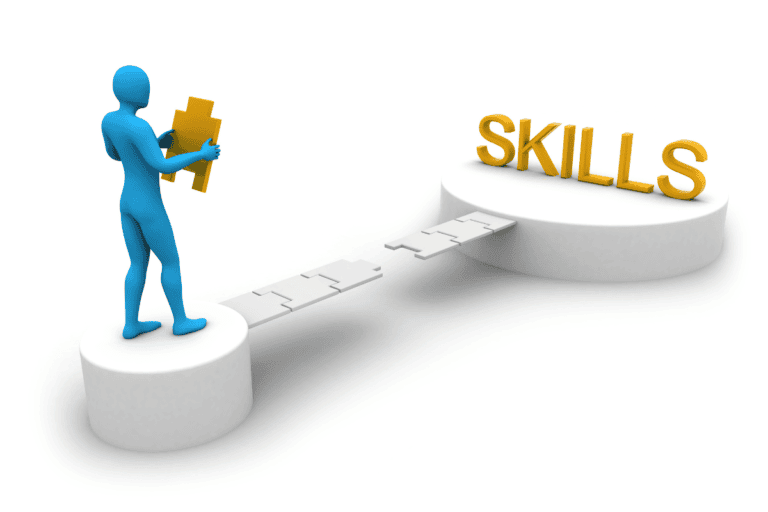Body Language of Leaders
Leaders don’t just talk; they also communicate with every move and look. Studies show that up to 70% of what we say isn’t with words. Things like how they stand, their facial expressions, and how they move their hands tell a lot about their leadership style.
These cues can show strength, confidence, trust, and friendliness. Leaders who get this can lead better, making a strong impression.
Knowing what a CEO’s body language means is key. First impressions happen fast, in under seven seconds, and body language plays a big part. The Kellogg School of Management found that how wide someone stands can change how others see their power.
A simple handshake can build as much rapport as talking for three hours. This shows how important body language is in leadership.
Understanding the Role of Body Language in Leadership
Body language is key in leadership. It includes gestures, facial expressions, and tone of voice. It’s crucial for leaders to know how nonverbal signals affect their team.
Definition of Body Language
Body language means the nonverbal signals leaders show through their actions. Actions like a firm handshake, eye contact, and posture matter. A study in the Journal of Cognitive Neuroscience found that a strong handshake can make people feel more trustworthy.
Importance of Nonverbal Communication
Nonverbal communication is very important for leaders. It makes up over 55% of how we communicate. Leaders need to read body language to understand how people feel.
Forbes says a leader’s body language can greatly affect their impact. Being good at nonverbal communication can make a leader more powerful.
Good leaders know how to use nonverbal cues to inspire trust. In online meetings, making a good first impression is key. Leaders who get this right are seen as more confident.
Using strong body language can really help a leader. People often see low-pitched voices as more confident. Leaders should watch how their team feels to keep things positive.
First Impressions: Making Them Count
Making a good first impression is key in leadership roles. First impressions happen fast and are very important. It takes just a few seconds for people to judge us. These quick thoughts shape how others see us as leaders.
Timeframe for First Impressions
First impressions happen almost instantly. In a split second, people start to make up their minds, mostly from body language. Only 7% comes from what we say, but 55% from how we act. So, showing off good leadership body language early can help build strong relationships.
Key Elements of First Impressions
To make a good first impression, keep these things in mind:
- Posture: Sitting or standing straight shows confidence and comfort. Standing tall is a key nonverbal signal that you’re a strong leader.
- Eye Contact: Keeping eye contact for about 60% of the time shows you’re fully engaged without being too intense, says Leil Lowndes.
- Smiles: A real smile makes others feel at ease and shows you’re friendly.
- Handshake: A firm handshake sets a positive note for the meeting.
- Clothing: Wearing the right clothes for the event can shape how people see you as professional and dependable.
Ann Demarais, from First Impressions, says people remember how you made them feel. Using good body language and caring communication is key. Leaning in a bit when talking helps build trust and shapes first impressions.
Adding these tips to your first meetings can help make a strong, lasting impression. It sets you up as a confident and skilled leader right from the start.
Eye Contact: The Window to Trust
Eye contact is key for leaders to build trust and show they’re sincere. Keeping eye contact for 4 to 5 seconds in talks shows you’re engaged. It also helps you seem more in charge.
Try to look people in the eye 50-70% of the time, whether you’re talking or listening. Even just 30% eye contact can help people remember what you said better.
Leaders who are good at eye contact make a bigger impact. Regular eye contact helps people remember you better. It makes people listen more during speeches.
Eye contact also makes people think about their actions. They might change how they act and show better body language. This makes you seem more like a natural leader.
It’s important to get better at eye contact slowly, especially if it’s hard for you. Start in easy situations to get used to looking people in the eye. Remember, how people view eye contact can vary by culture.
About 93 percent of people make up their mind about someone in the first five minutes of meeting them. So, eye contact is very important for making a good first impression. It shows confidence and charisma, which are key for leaders.
Don’t stare too much, as it can seem aggressive. And don’t avoid eye contact, as it might look like you’re nervous or not interested. Finding a good balance is key. Leaders like Barack Obama and Oprah Winfrey use eye contact well to connect with people right away.
Confident Posture Techniques
It’s key for leaders to have confident posture. How you stand affects how others see your authority and confidence. Using the power poses of leaders can make you seem strong and in charge.
Importance of Posture in Leadership
Good posture shows confidence and skill. Bad posture might show you’re unsure or defensive. Leaders who stand tall and open are more trusted. Slouching or crossing arms can make you seem distant or unsure.
Common Postures and Their Impacts
Some postures can help or hurt a leader’s image. For example, power poses of leaders like standing with hands on hips or sitting with hands behind the head and chest out boost power and confidence. But crossing arms or hunching over can show defensiveness or doubt.
Tips for Maintaining a Confident Posture
Here are some tips to keep a confident posture:
- Stand tall: Keep your shoulders back and your head up. This makes you look and feel more confident.
- Open your stance: Don’t cross your arms or legs. This can make you seem closed off. Keep your arms open to show you’re open and trustworthy.
- Use power poses: Do power poses for a few minutes each day to boost your confidence.
- Avoid fidgeting: Fidgeting shows anxiety or doubt. Try to stay still and purposeful with your movements.
Using these confident posture tips can make you seem stronger and more authoritative. Remember, how you act says a lot about your abilities, just like your words do.
Hand Gestures: Enhancing Your Communication
Hand gestures are key in leadership, boosting nonverbal communication. They show enthusiasm, confidence, and make your words clearer. Research shows they add more than 65 percent to what you say.
In Western cultures, a thumbs up means approval. The peace sign is a global symbol of peace or victory. But, it’s important to know the cultural meaning of gestures. In some places, a thumbs up is seen as rude.
Using the right hand gestures can make you more clear and engaging. On video calls, most info is seen, not heard. So, hand gestures help a lot. Keep them in the space from your chest to your waist to make sure they’re seen.
In work settings, certain hand gestures help with communication and keeping people interested:
- 🔢 Enumerating – Hand gestures when listing points help people remember better.
- 📌 Pointing – Pointing towards the screen or webcam connects you with your audience.
- 🏢 Stacked Parallel Hands – This gesture highlights growth or comparisons well.
- 👏 Bringing Hands Together – This gesture shows you value and praise others.
Studies of TED Talks show that top speakers use more hand gestures. This shows how nonverbal cues can really engage people.
Knowing how to use hand gestures can make you seem more passionate and convincing. It’s important to learn these gestures to improve how you communicate.
The Power of Facial Expressions
Facial expressions are key to body language. They help show feelings, plans, and reactions. Leaders who know how to use facial expressions well can connect better with people.
Smiling and Its Impact on Leadership
A real smile is a great tool for leaders. Smiling releases happy feelings and makes the area around you feel better. Real smiles make leaders seem friendly and easy to talk to. This builds trust and friendship in the team.
Studies show up to 70% of what we say without words is through facial expressions. So, smiles are very powerful in body language.
Reading and Using Facial Cues
Knowing how to read and answer facial expressions is key. Leaders who get facial cues well can understand their team’s feelings better. This helps with talking to each other.
Seeing signs of confusion, frustration, or excitement helps leaders change how they work. This keeps the team working well together.
Leaders use their facial expressions to give nonverbal feedback. By matching their face with their words, they make their messages clear. This helps them lead better.
The Art of Mirroring
Mirroring is a way to connect with others by copying their body language. It makes leaders more effective by showing they care and understand. This method uses gestures and presence to build strong leadership.
What is Mirroring?
Mirroring means copying someone’s body language, like their gestures and expressions. It’s an old way of talking without words. It uses special brain cells to make us feel connected and understand each other better.
Benefits of Mirroring in Leadership
- Enhances Communication: It helps leaders and their teams connect better and understand each other.
- Builds Trust: Copying a leader’s gestures makes them seem more trustworthy and close to their team.
- Improves Harmony: Leaders who mirror their team feel more in sync, making everyone feel valued.
- Engages Mirror Neurons: These brain cells help us connect and empathize, making teams work better together.
To mirror well, start by naturally copying others, adjust your body language, and ask questions that match what they say. But be careful, as it can vary by culture and personal style. It should be done in a way that feels good to everyone.
Learning to mirror well lets leaders build strong, respectful teams. This helps them share their vision and goals smoothly.
Maintaining Personal Space and Boundaries
Knowing how to keep personal space is key for *executive presence*. Leaders must balance being approachable with respecting others’ space. This helps create a respectful and productive work place.
Respecting Personal Space
Respecting personal space varies by culture, upbringing, age, gender, and personality. *Proxemics* talks about four types of personal space: intimate, personal, social, and public. At work, sticking to these spaces shows respect and professionalism. Breaking them can cause misunderstandings and stress, making communication harder.
Impact on Professional Relationships
How a leader handles personal boundaries affects work relationships. Knowing about personal space helps keep a leader’s *personal space* and boosts *executive presence*. Being respectful lowers tension, helps focus, and builds trust and respect in the team. Important ways to keep personal boundaries include:
- Clearly defining boundaries
- Separating personal from work life
- Tackling issues quickly
- Setting expectations early
Good boundary management and respecting personal space are key skills. They help a leader’s executive presence and lead to healthier, more productive work relationships.
Body Language of Leaders
Knowing how leaders use body language is key to being effective. When we first meet someone, we make quick judgments, even before we talk. This shows how important body language is in making a good first impression.
Body language makes up 55% of how we communicate, more than words or tone. A simple handshake can tell us a lot about someone’s personality. This shows how leaders’ nonverbal cues are crucial in building trust.
Keeping eye contact for five to seven seconds shows you’re sincere and trustworthy. Open and natural gestures also help avoid seeming fake. Keeping your hands open and not covering your face shows you’re open and honest, important for leaders.
Women often touch more during talks than men. This shows leaders must be aware of their body language to avoid confusion. A study in the Netherlands found mirroring body language and tone can improve communication, like giving bigger tips to waiters.
Knowing physical signs of lying, like wide eyes or twitches, helps leaders understand situations better. Matching nonverbal and verbal messages is key to clear communication.
Improving body language takes practice and being consistent. Leadership is a skill that grows with time. Having good body language helps leaders show the right image and style.
Being confident is crucial for leaders to show their feelings and goals clearly. Using nonverbal cues like eye contact and open gestures helps communication. It’s important to balance open and closed body language to avoid making others uncomfortable.
By practicing and improving body language, leaders can better communicate and lead. Mastering leadership body language and understanding nonverbal cues leads to better interactions and stronger team bonds.
Conclusion
A leader’s body language greatly affects their ability to lead and influence. Nonverbal cues like confident postures and facial expressions are key. They help shape how people see the leader and their impact.
Using positive gestures like open palms and steady eye contact builds trust. Hand gestures and firm handshakes show confidence and authority. These actions make a leader seem strong in person or online.
Knowing how to read and use body language is vital for leaders. Skills like mirroring and emotional intelligence improve workplace interactions. Leaders who get these skills boost their own presence and create a respectful work environment. This leads to more successful and motivated teams.
Source Links
- 5 Ways Body Language Impacts Leadership Results
- Powerful Body Language Hacks for Successful Leaders
- Body Language Basics For New Leaders
- How to Use Body Language to Be a Better Leader – Tips From the Experts! – Mind Tools
- How to Make a Good First Impression: Expert Tips and Tricks
- Council Post: The Power Of First Impressions: 5 Tips That Can Impact Your Business
- Eye Contact in Communication: Why Eye Contact Is Important?
- How Body Language Can Define a Leader
- Analyzing & Interpreting Your Clients’ Body Language: 26 Tips
- Soft Skills: 10 Body Language Tips for Leaders
- Body Language — A Checklist for Leaders
- Leading with Confidence: Body Language Tips for Leaders – Lolly Daskal | Leadership
- How to Use Hand Gestures to Improve Communication
- 7 hand gestures that will immediately increase the value of what you say. – Rosemary Ravinal
- How to Use Hand Gestures in a Powerful Way When You Communicate
- Home
- Great Leaders Have Expressive Control | SIGMA Assessment Systems
- The Art of Non-Verbal Communication: The Technique of Mirroring
- The Art and Science of Mirroring
- Personal Space? Definition, Meaning & Types
- Healthy boundaries and psychological safety in the workplace – HR Future
- The body language of a leader
- Body Language Secrets of Leaders
- How to Read Body Language of Leaders?- InspireAmbitions







